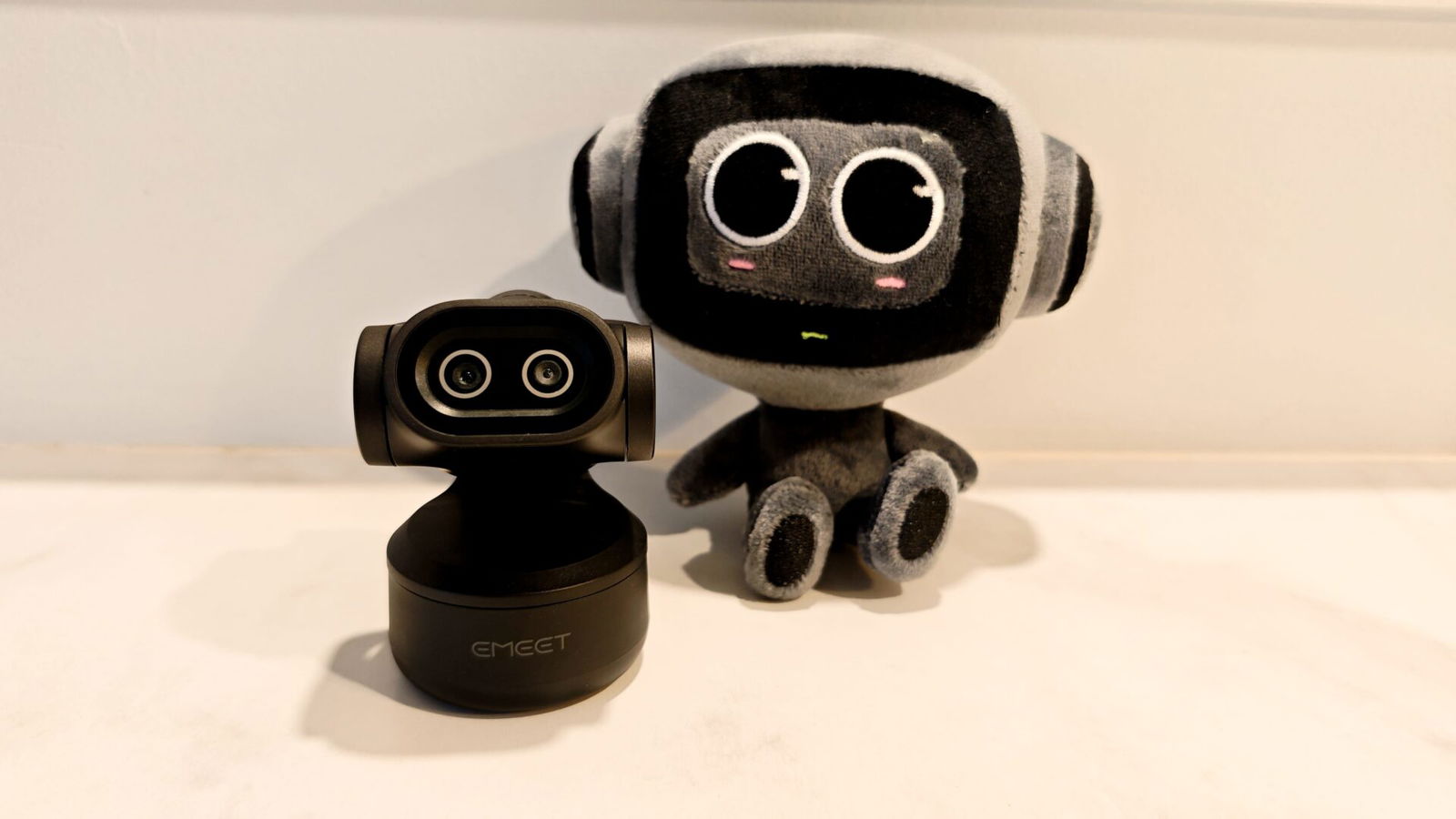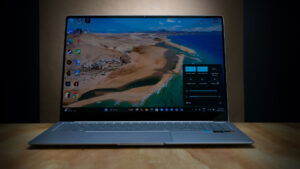The EMEET PIXY webcam is a PTZ (pan, tilt, zoom) AI-driven webcam boasting an impressive 4K dual-camera design. With a focus on intelligent tracking, sub-one-second auto focus, 4K capture and a three-microphone setup, the PIXY aims to provide users a no-hassle, professional recording and streaming experience at a budget-conscious $159.99. Can this impressive, feature-rich 4K PTZ compete with the likes of the OBSbot Tiny 2 or Insta360 Link 2? Let’s jump in and find out.
The PIXY follows a similar design philosophy to other PTZ webcams. It features a solid round base that houses the motor control and mounting thread, with a thin neck that stabilizes the camera lens. It’s a tried and tested design that works well here as it does with other PTZ webcam models.
The mounting bracket, which is designed to allow the PIXY to rest on top of a monitor, provides a three-point hinge system. This system allows for easy adjustments to be made to the camera’s levelling. Attaching the PIXY to the mount is handled via the built in ¼ inch thread screw. While I was a bit disappointed that the mount didn’t include a magnetic attachment option, the mounting system still securely holds the camera in place when threaded tightly.
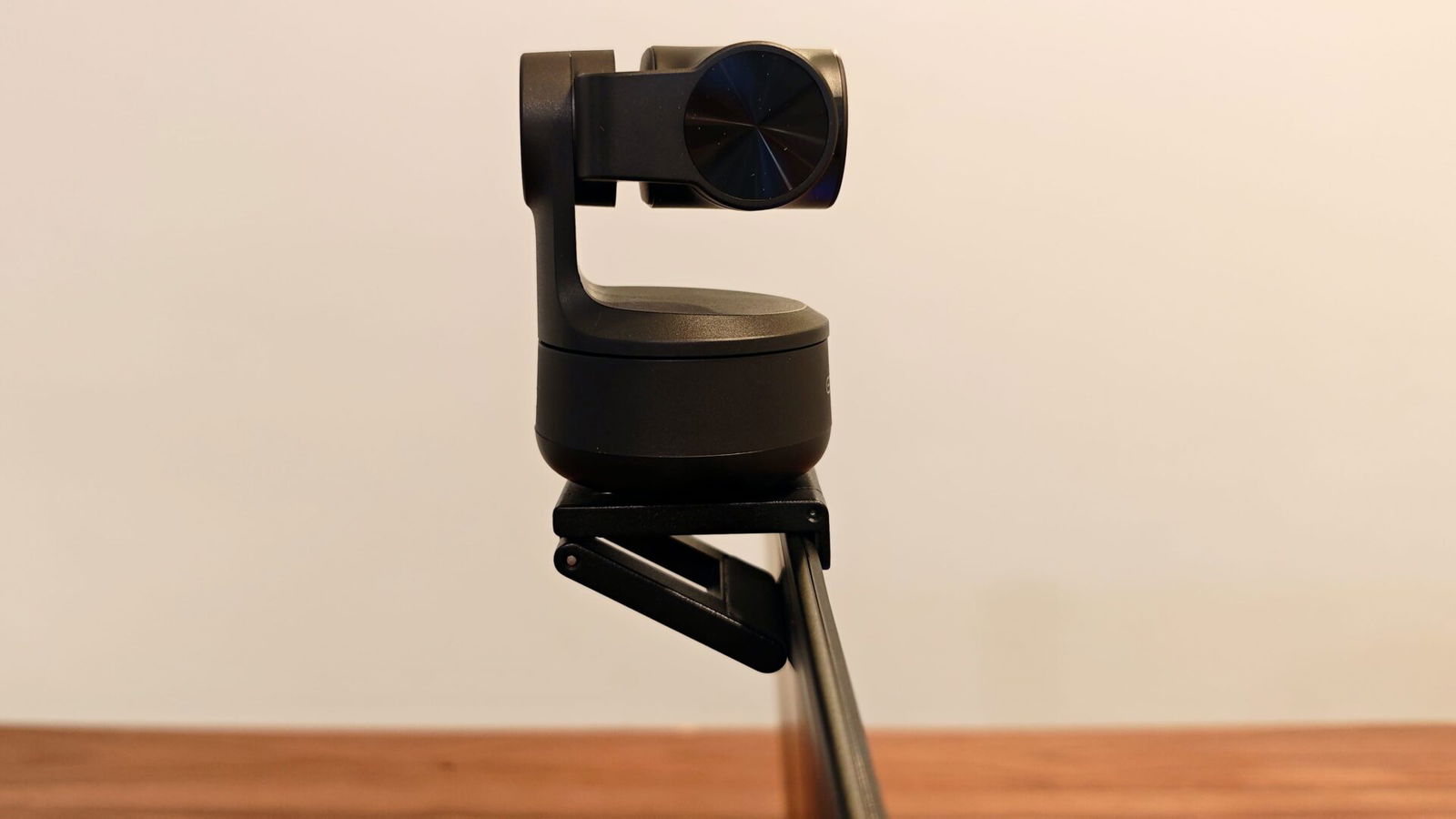
Setting up the PIXY is a straightforward affair. After downloading and installing the EMEET Studio software, simply plug in the PIXY and you are in business. The software immediately recognizes the camera and, after a quick tutorial, gives access to all of the PIXY’s features.
As for features, the EMEET PIXY webcam provides a solid amount of fine tuning, control and picture adjustments in line with other PTZ webcams. Along with the standard filters, effects, and focusing modes, the PIXY also allows for selection of microphone modes, camera operation modes and full manual gimbal control, all of which are easy to find and access from within EMEET Studio.
“As for features, the EMEET PIXY webcam provides a solid amount of fine tuning, control and picture adjustments in line with other PTZ webcams.”
Looking at the hardware, the webcam packs a pretty solid set of specs. The EMEET PIXY webcam features a Sony 1/2.55” sensor, a staple for many premium webcams and mobile devices. Known for its impressive high-resolution image capture and low-light capabilities, the Sony 1/2.55” sensor is an excellent choice for the PIXY. It also provides a solid 4K30 resolution that translates well to capture and streaming.
The image quality of the PIXY, as would be expected considering the lens, is excellent for this budget-friendly 4K PTZ webcam. In testing, it provided sharp detail, true-to-life colour representation and a smooth 4K30 FPS capture experience. Considering the $159.99 price point, I was quite impressed with the final image capture results.
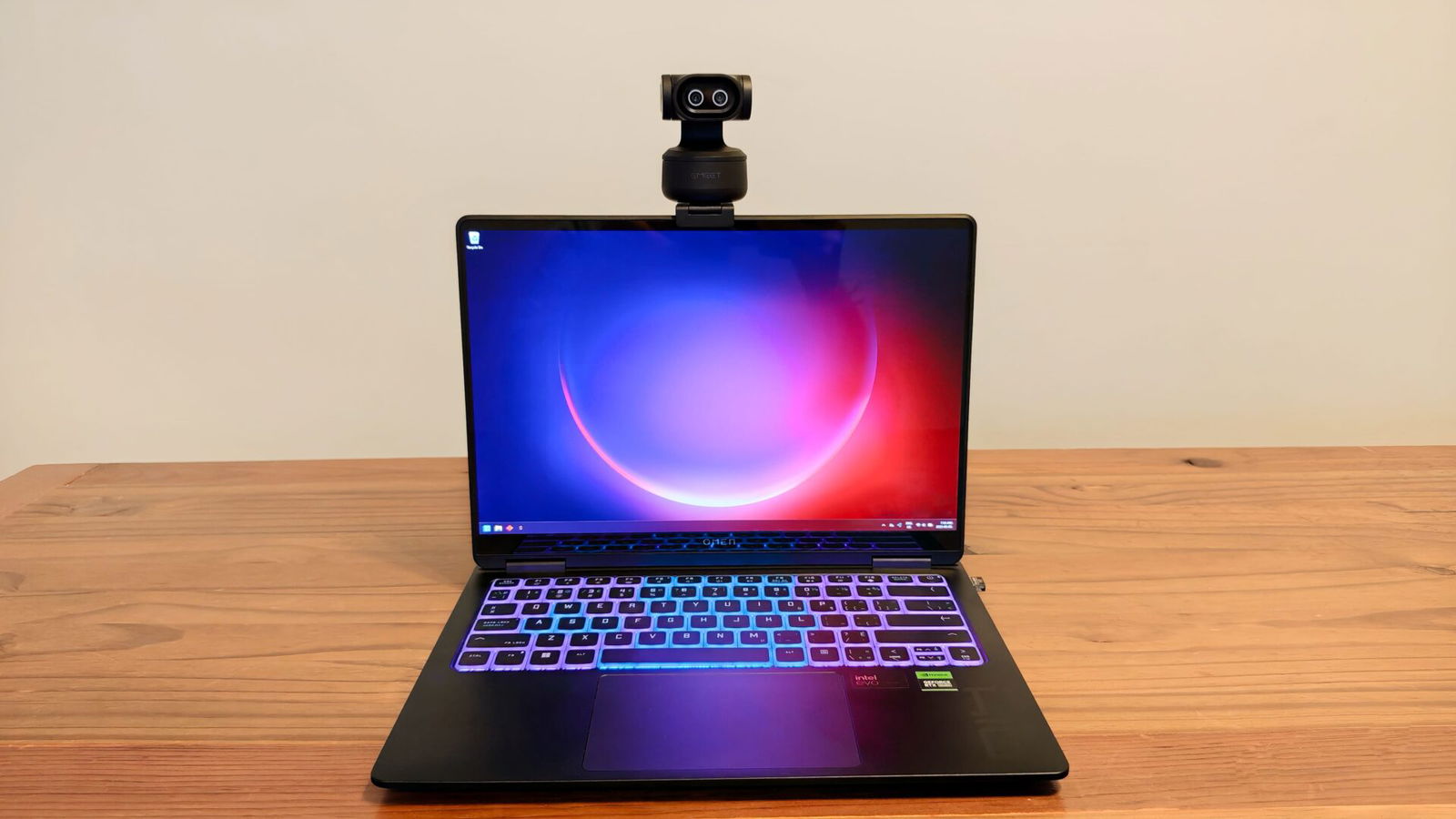
Auto focus is another feature I was quite taken with. With three preset focus modes available, Selected Area, Central Area and Human Face, the PIXY can accommodate any situation. While the PIXY boasts a 0.2s auto focus capability, seeing it in action was still magnificent to witness.
The camera has no issue shifting focus based on the most prominent subject and does so incredibly quickly and without any jarring stuttering. Additionally, when face tracking is engaged, as long as the PIXY can see any part of the subject it’s tracking, it will not lose focus. The auto focus is impressive on the PIXY and easily rivals that of the Link 2 or OBSBot Tiny 2.
AI tracking is another keynote of the PIXY experience and, once again, is an impressive tool in the PIXY’s toolbelt. The EMEET PIXY webcam features a second, dedicated AI camera that helps provide a stellar AI feature set. While tracking can be engaged via EMEET software, the PIXY also supports gesture control activation. While I’ve tested gesture control on several AI-driven PTZ webcams, I’ve typically found them to be buggy at best, often requiring a few attempts to engage, other times not engaging at all.
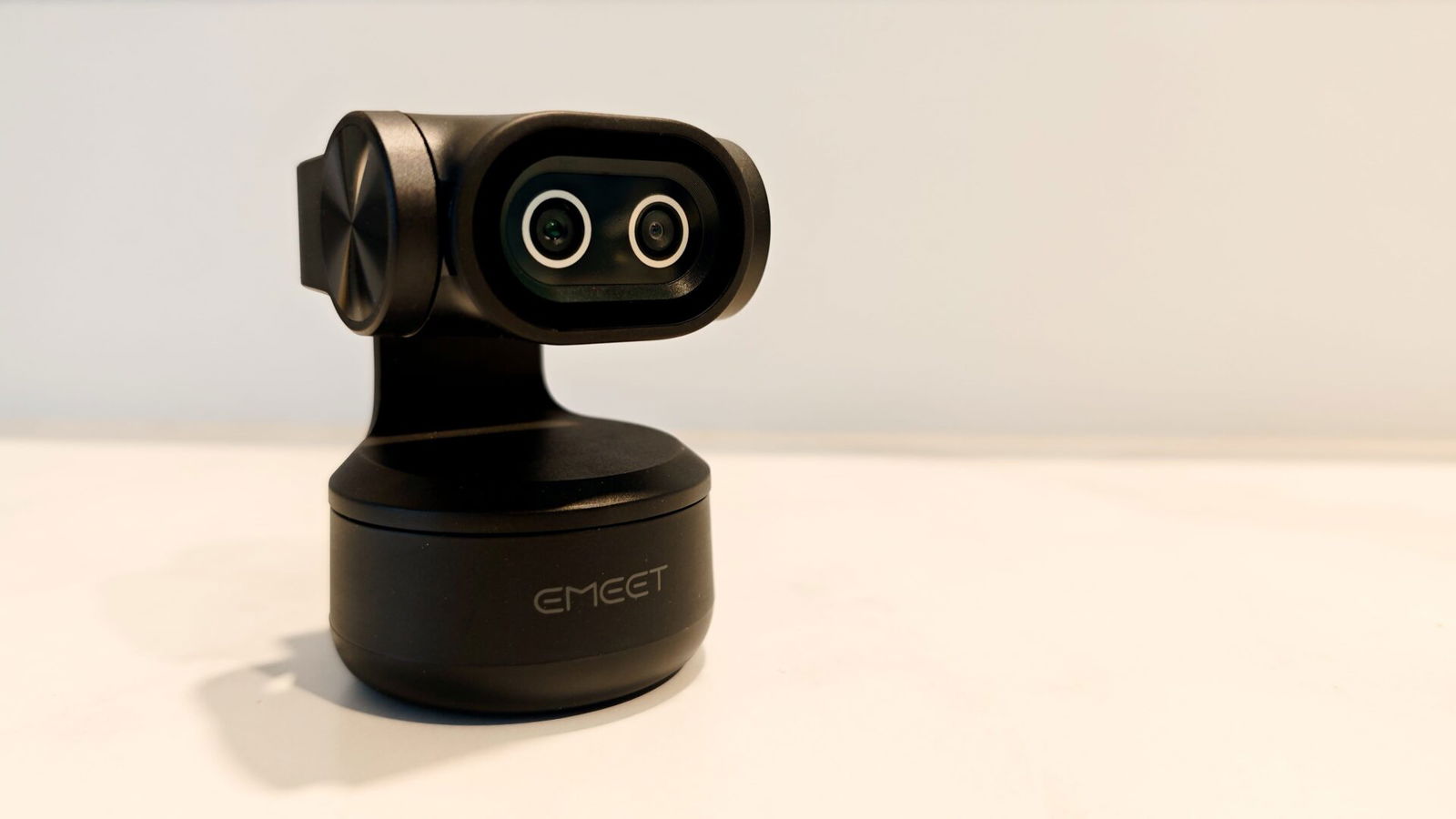
While the PIXY doesn’t provide some of the more robust controls, such as gesture-based zoom or frame swapping, it does provide a basic tracking on/off gesture, and this is to its advantage. While many other AI PTZ attempt to provide complex gesture solutions that have historically had mixed results, the PIXY webcam’s simple, single gesture to engage tracking works every time, without fail.
To engage or disengage tracking, simply hold your right palm toward the camera for a few seconds. The Indicator light turns blue to inform you that you’re in tracking mode and you’re done. It’s simple, effective and prevents you from looking like a fool flailing your arms around at the camera while presenting in a meeting.
“The EMEET PIXY webcam features a Sony 1/2.55” sensor, a staple for many premium webcams and mobile devices.”
As for the AI tracking capabilities of the EMEET PIXY webcam, they proved to be quite impressive. The system has no issue tracking a subject from various distances, and while there isn’t any option to speed up or slow down the gimbal’s movement, it provides steady and smooth tracking. The result is a video that looks smooth, natural and professional. I was also impressed at how well the PIXY can lock onto a subject and not lose tracking even if other moving bodies enter the frame. The AI tracking was able to distinguish between the focused subject and other people, constantly keeping a lock on the intended subject.
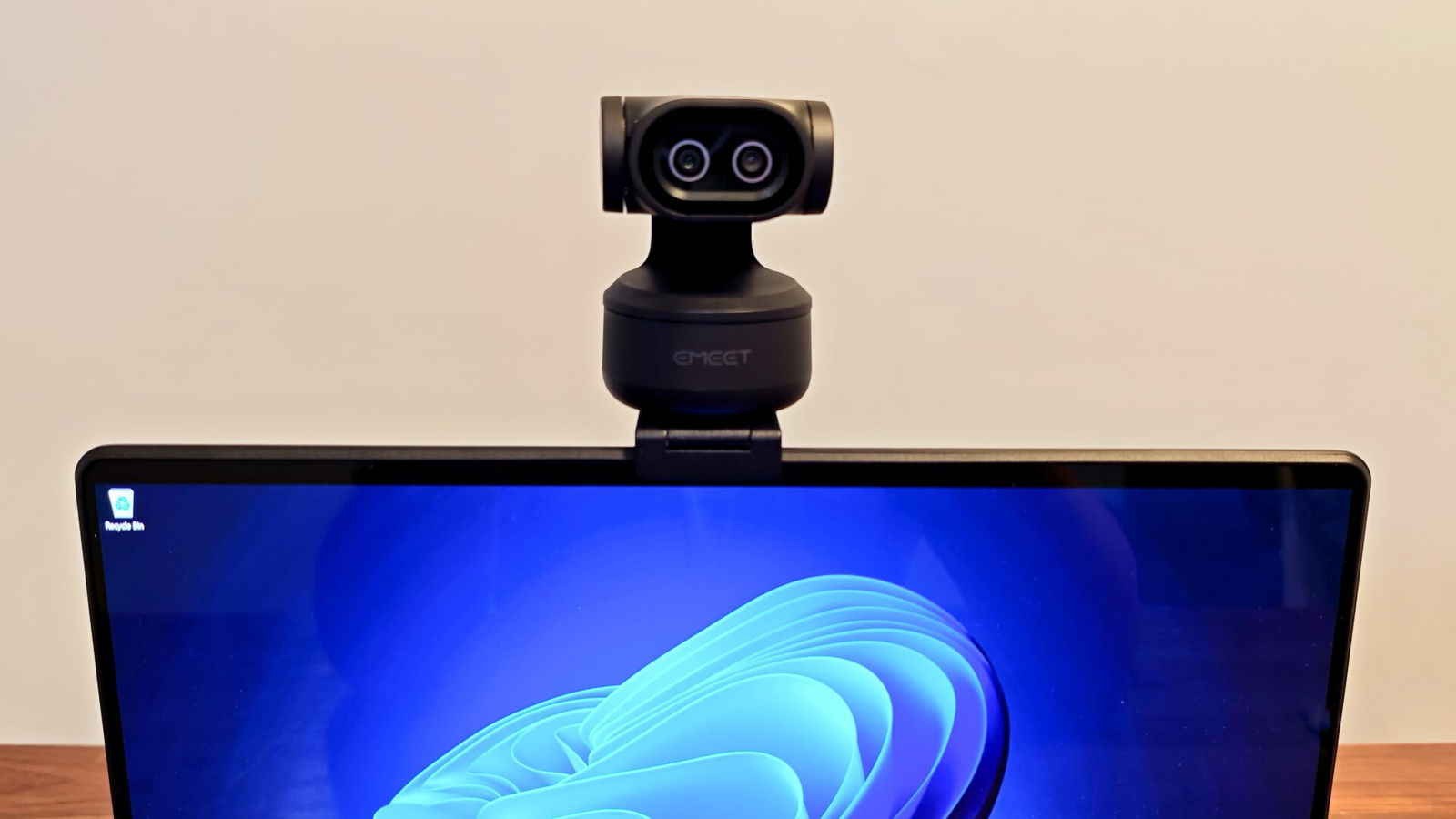
For manual framing, EMEET Studio includes virtual gimbal controls that allow you to pan, tilt and zoom in. While quite functional, it’s not quite as smooth an experience as the AI tracking. While great for creating preset positions, three of which can be saved, I wouldn’t recommend using it for live filming. As for Zoom, while it does work well, it is limited to 1080P30 or lower resolution. For anything above that, the camera defaults to its widest field of view (73°).
“As for the AI tracking capabilities of the EMEET PIXY webcam, they proved to be quite impressive.”
The PIXY also includes a three-microphone system as well as three preset audio capture modes. Live mode does a solid job of capturing the subject’s audio while reducing overall room noise. In testing, I found this to be my preferred audio mode as it balanced the overall audio experience well without any notable artifacting in the subject’s voice.
Noise-cancelling mode worked well, easily filtering out loud background noise. It is worth noting that there is some slight audio artifacting present in the subject’s audio capture. It isn’t a major concern, but with Live mode being as good as it is, there aren’t many scenarios where I would feel the need to leverage Noise Cancelling. Original sound mode is as advertised. It simply captures the room audio as is.
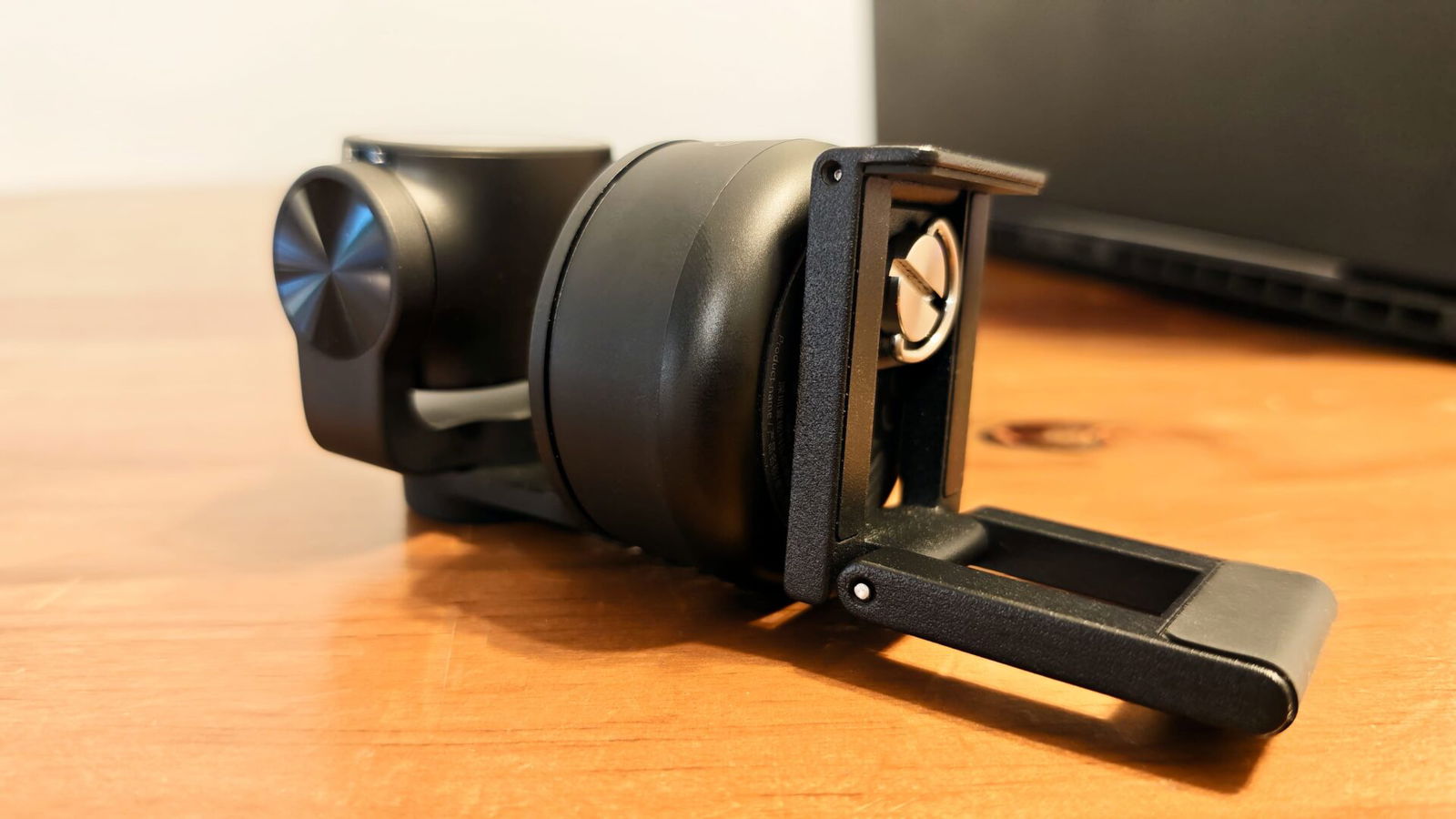
With all three modes, the audio capture is solid with Live and Noise Cancelling boosting the subject audio even when standing several feet from the PIXY. While there is a bit of a hollow sound to the overall capture, this is to be expected considering the condenser nature of the microphones. The more acoustically treated the space is, the less this becomes an issue. Overall, though, I found the audio capture to be solid for a webcam experience.
The EMEET PIXY webcam is a well-designed and implemented AI PTZ Webcam. While it isn’t specifically treading new ground in the realm of AI-driven PTZ webcams, everything it does it does quite well and at a more budget-conscious price point than its competition, While it lacks a few minor features of some of the other AI driven webcams on the market the PIXY performs well where it counts and makes this a webcam worth considering.
